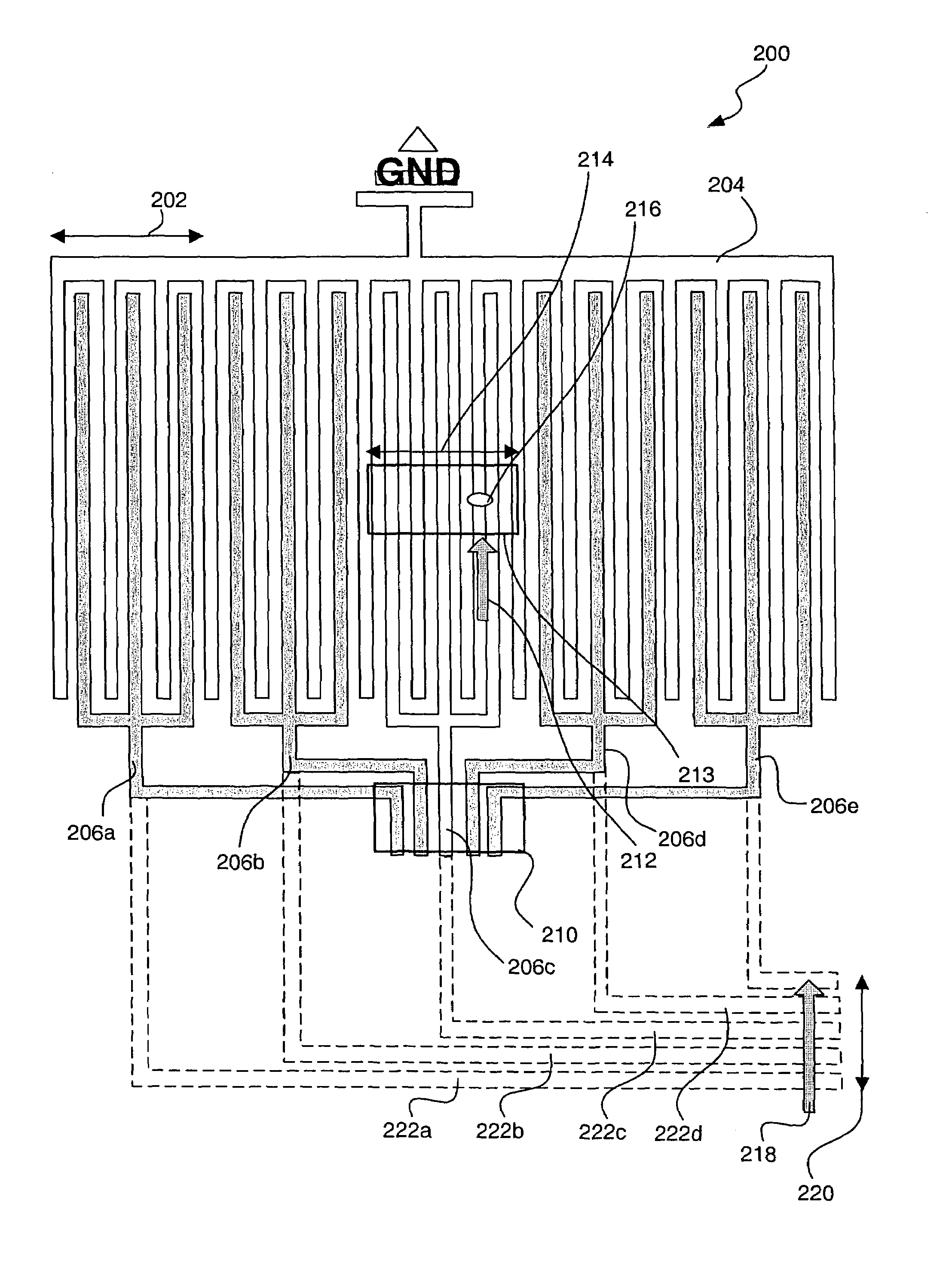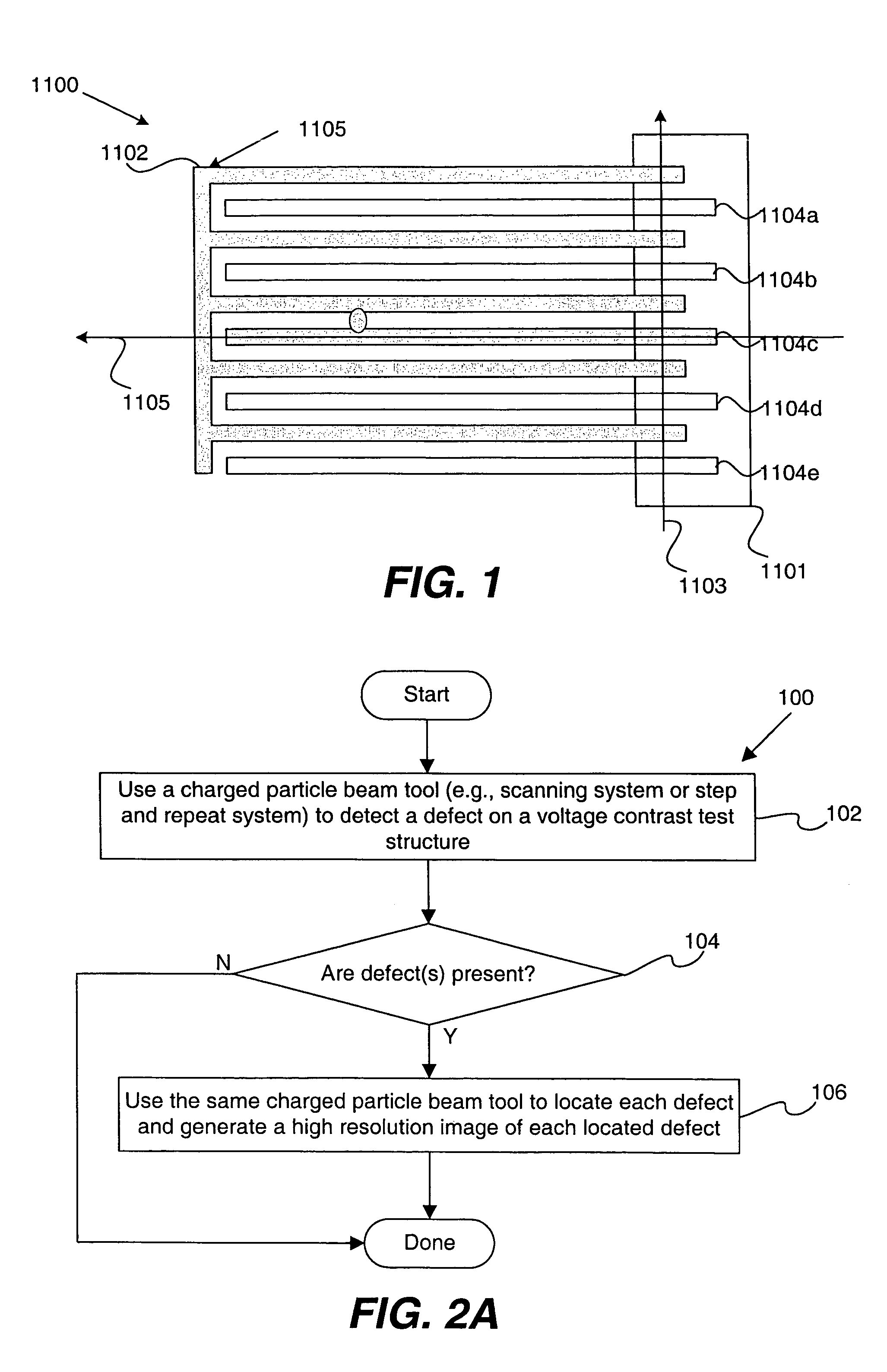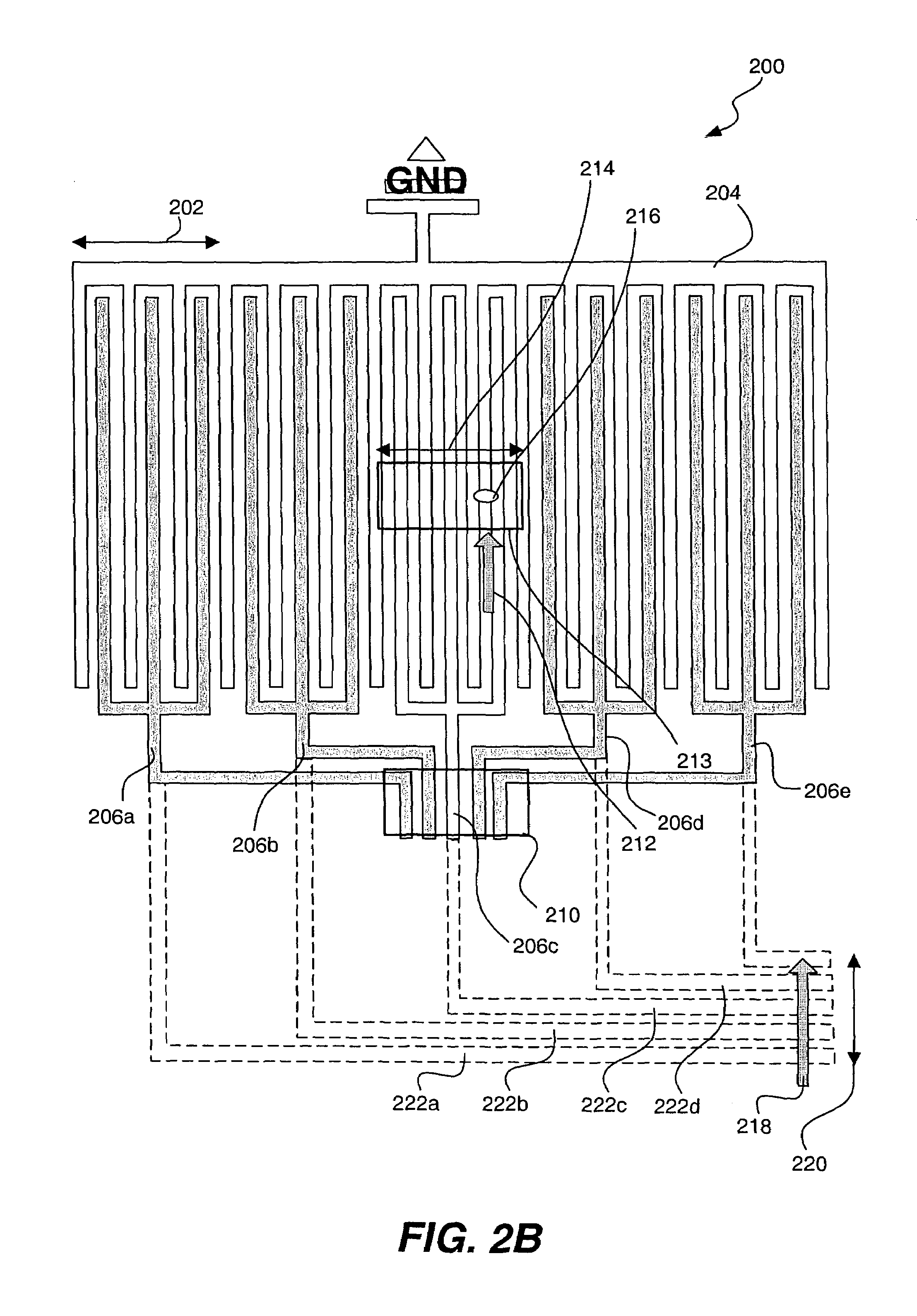Methodologies for efficient inspection of test structures using electron beam scanning and step and repeat systems
a technology of electron beam scanning and test structure, applied in semiconductor/solid-state device testing/measurement, semiconductor/solid-state device details, instruments, etc., can solve the problems of significant time and throughput penalty, inability to generate high-resolution images with conventional e-beam scanning tools, and inability to rotate and realign the test structur
- Summary
- Abstract
- Description
- Claims
- Application Information
AI Technical Summary
Benefits of technology
Problems solved by technology
Method used
Image
Examples
first embodiment
[0042]FIG. 2B is a diagrammatic top view of an example test structure for localizing shorts in accordance with the present invention. As shown, the test structure 200 includes a first conductive substructure 204 having a comb shape. The first substructure 204 is designed to charge to a first voltage potential or brightness level during a voltage contrast inspection. In the illustrated embodiment, the first substructure 204 is coupled to a grounding structure or to a pseudo ground, e.g., the substrate or a relatively large conductive structure (not shown) that will cause the first substructure 204 to charge similarly as if it were coupled to the substrate. A plurality of second conductive substructures having comb shapes 206 are each left floating. The tines of the second substructures 206 are interleaved between the tines of the first substructure 204.
[0043]In the illustrated embodiment, each second substructure 206 has a portion which extends into an area 210 small enough to fit wi...
second embodiment
[0057]The techniques of the present invention may be practiced on other types of test structures, besides the comb type test structure for finding shorts of FIG. 2B. FIG. 5 is a diagrammatic top view representation of a test structure 500 in accordance with the present invention. This test structure 500 is designed to mimic a portion of an SRAM device and is designed to detect the presence of shorts using the techniques described above. Similar to the test structure of FIG. 2B, this SRAM type test structure 500 includes a plurality of substructures 501a through 501e. Each substructure 501 is adjacent to a plurality of other substructures 503 (e.g., 503a and 503b) which are coupled to the substrate through conductive vias (e.g., via 505a), while the substructures 501 remain floating and not coupled with the substrate.
[0058]Alternatively, the adjacent “grounded” substructures 503 may be coupled to a large structure, such as a large probe pad 507, so that the grounded substructures cha...
third embodiment
[0061]A test structure may alternatively be designed to facilitate detection of open type defects. FIG. 6 is a diagrammatic top view representation of a test structure 600 in accordance with the present invention. This test structure 600 includes a plurality of substructures 601a through 601d. Each substructure is designed so that a first end extends into initial field of view area 602, while a second end is coupled to ground.
[0062]An e-beam may initially be scanned over the first ends in field of view area 602 to detect open type defects in substructures 601. In this embodiment, the substructures will appear bright when coupled to ground and dark. However, a substructure's first end (which is opposite the grounded second end) will appear bright when there is an open defect which decouples the first end from ground. As shown, substructure 601a has an open defect 606 and its first end appears dark in field of view area 602. The open defect 606 is found by moving or stepping the e-bea...
PUM
 Login to View More
Login to View More Abstract
Description
Claims
Application Information
 Login to View More
Login to View More - R&D
- Intellectual Property
- Life Sciences
- Materials
- Tech Scout
- Unparalleled Data Quality
- Higher Quality Content
- 60% Fewer Hallucinations
Browse by: Latest US Patents, China's latest patents, Technical Efficacy Thesaurus, Application Domain, Technology Topic, Popular Technical Reports.
© 2025 PatSnap. All rights reserved.Legal|Privacy policy|Modern Slavery Act Transparency Statement|Sitemap|About US| Contact US: help@patsnap.com



